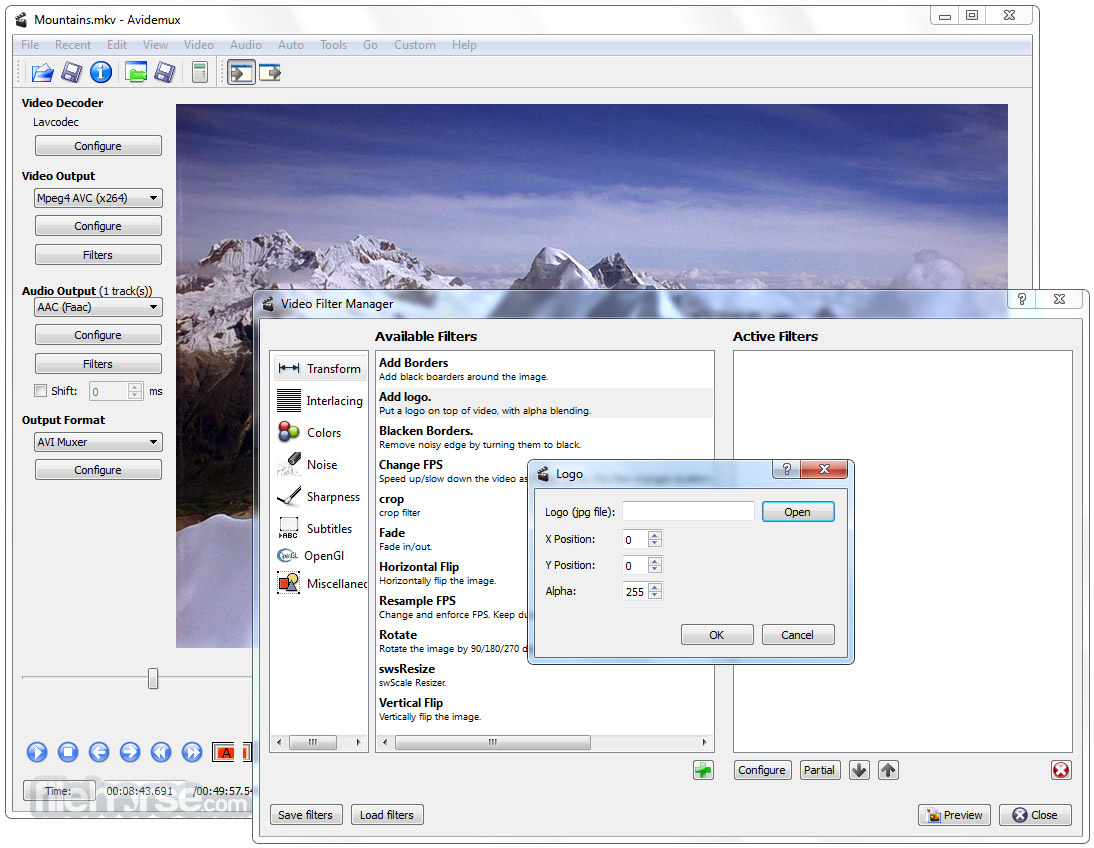

The extension of VIDEO files is only an indication of their CONTAINER, not of their FORMAT. but NOT in the case of VIDEO files (more complex: composed of video + audio, & subtitles if not even more).


so, note this: by displaying their extensions (always unhide all extensions, under Windows), Windows shows the actual format of many. and just like you don't understand another language until you learn it. One codec is required by type of video, just like you understand + speak English because your brain contains the "codec" in that case: rules, vocabulary, etc. Instead, you get the typical green screen, sometimes a warning.

Without the right codec for a certain type of video, no playing nor editing can be done. It - or rather: they let the interface read, play the corresponding videos, and also, "translate" them (= convert them) to other video "formats", that are: other TYPES of video.Īutonomous editors (like "Avidemux") and players (" VLC" etc.) exploit their own codecs, not the ones you may install (or that are already installed) in Windows The "codec (short for compressor - decompressor or coder - decoder)" is an essential software element, used by video editing and conversion interfaces, such as "AviDemux", " VirtualDub", "Sony Vegas" and so on. Launching another version is just one click away, and many times: simpler than studying the complex sub-options of a single software (or going nuts because the darn thing crashed AGAIN). Versions 2.6.x display them, but won't let me use the cursor. SOME of my videos, though recent, can only be scrolled with 2.5.6. * Including the old 2.5.6 v° (32-bit, but as long as it works.), most recent one that belongs to the "2.5.x branch" (as opposed to the "2.6.x branch" very similar interface but quite different softwares in fact). several versions * - and, when one refuses to work or returns its (quite usual) "too short" warning, switch to another v°. " AviDemux", besides being excellent, is full of bugs (nevertheless, I couldn't live without it).


 0 kommentar(er)
0 kommentar(er)
